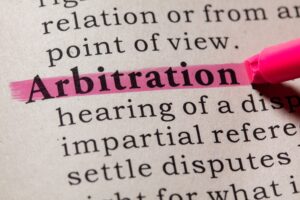
Arbitration as an Alternative in Family Law
Recently, we have had a number of cases where parties have good prospects to appeal, but a decision has been
Call us on
In every family law property settlement it is always important to identify the interest in property that each of the husband and wife has as the current date. The High Court has told us that there is no such thing as matrimonial property and one of the first and most crucial steps in any matrimonial dispute is to identify separately the husband’s and wife’s legal and equitable interests in property.
In complex financial matters this may at first seems a daunting exercise but in reality the concept is simple. It is the husband and wife’s interest in various entities and the proprietary nature of that interest that needs to be identified before being valued.

At an early stage one of the most important tasks to undertake, I find, is to compile a corporate diagram of the relevant structures together with a detailed schedule of assets and liabilities. This helps in looking at the structures as a whole and at the same time identifying various roles and interests held by either the husband or the wife within each of the various entities.
The corporate structure also aids in being able to trace where the interest may ultimately be held. For example it may be that the notional value of assets within the typical family discretionary trust is the vehicle that ultimately holds the proprietary interests of the husband and the wife at a certain value. However, in properly identifying how those notional proprietary interests come about within the trust may itself be a complex exercise. The trust may hold various interests in other entities which in turn own interests in other entities and so on.
The ability to be able to work through and look at where the ultimate holding entity is and how it is made up is an important and crucial task to undertake early in complex financial matters. Naturally, the good family lawyers are often assisted by good accountants and / commercial lawyers who may have this information at their fingertips – a good corporate diagram and / or a detailed spreadsheet of assets and liabilities is essential. However, it is always the family lawyer’s task to review that corporate diagram or schedule to make sure that it accurately reflects proprietary interests of both a legal and equitable nature that would be recognised in the Family Court.
These tasks are very important to be tackled head on at an early stage in the matter. Often I see matters where parties are well advanced in negotiations, or perhaps even mediation or litigation, but do not actually have a complete and detailed schedule of assets and liabilities. They had briefed an accountant to do a valuation, but other than that they had not done anything themselves to identify where interests lie in the complex structure.
A common mistake I see is that parties like to identify individual assets and ignore the entity in which each asset is held. Obviously, that is an exercise fraught with danger and is apt to give rise to negligent outcomes.
The identification of the legal and equitable interest in property early on through the construction of corporate diagrams and detailed schedules and spreadsheets also assists the expert family lawyer in looking at other problems that may arise such as tax and other revenue problems when the web is untangled. Identifying these at a very early stage is a critical role of a family lawyer in any kind of complex dispute. Whilst the family lawyer will more than likely need help in relation to the complexities of any revenue problem, the ability to be able to identify that early and flag those issues is critically important.
Once the detailed schedule of assets and liabilities identifying the legal and equitable interests in property together with corporate structure is compiled, even on a preliminary basis, then this helps to lay part of the foundations before moving forward in a complex matter.
In most family law matters it is extremely important for the family lawyer to spend time and detail in preparing the foundation or building blocks of the case. In complex matters that is more so than ever. It is extremely important before launching into letters and negotiations in complex matters to have a firmly established corporate diagram, schedule of assets and liabilities and other things that we will touch upon in future articles of this nature.
Once all of the above is completed then at least the lawyer can now move to the valuation part of the exercise.
At an early stage one of the most important tasks to undertake, I find, is to compile a corporate diagram of the relevant structures together with a detailed schedule of assets and liabilities. This helps in looking at the structures as a whole and at the same time identifying various roles and interests held by either the husband or the wife within each of the various entities.

Recently, we have had a number of cases where parties have good prospects to appeal, but a decision has been

Recently, we have had a number of cases where parties have good prospects to appeal, but a decision has been

Recently, we have had a number of cases where parties have good prospects to appeal, but a decision has been

© 2024 Hartley Family Law – All Rights Reserved | Privacy | Terms & Conditions

The Privacy Statement of the Company is incorporated into these Terms and Conditions. The Company respects the privacy of all its customers and business contacts. The Company is subject to the requirements of the National Privacy Principles which are contained in the Privacy Act.
1. How is personal information collected?
Your name, email address and phone number are collected on the contact form to allow the Company to contact you.
If you email or phone the Company directly, then the Company may record your personal details.
Your personal information may be used to:
a) Improve service to you, the customer
b) The Company may use personal information about you for marketing and research purposes. If you do not wish this to occur, please contact us and we will ensure this does not occur
c) Your personal information is not disclosed to any organisation outside of the Company.
2. Will personal information be given to anyone else?
The Company does not sell or provide your personal information to any other company.
3. Security of personal information
The Company employees are required, as a condition of their employment, to treat personal information held by the Company as confidential, and to maintain the confidentiality of that personal information.
The Company protects the personal information it collects in a secure database.
4. Access and correction
You can access your data at any time by contacting the Company directly.
You also have the right to ask us to correct information about you which is inaccurate, incomplete or out of date.
We ask you to contact the Company by email or phone using the Company contact details if you wish to access or correct any of your personal details.
5. Online privacy issues
To the extent that this Privacy Policy applies to online privacy issues, it is to be read as forming part of the terms of use for our website. When you deal with the Company whether online or otherwise, the Company takes its privacy obligations seriously.
6. Additional privacy information and how to contact the Company
The Company may change its Privacy Policy at any time.
For further information about privacy issues and the protection of privacy visit the Australian Federal Privacy Commissioner’s website at www.privacy.gov.au. If you feel that The Company is not complying with this Privacy Policy, or if you have other privacy concerns, please contact the company.